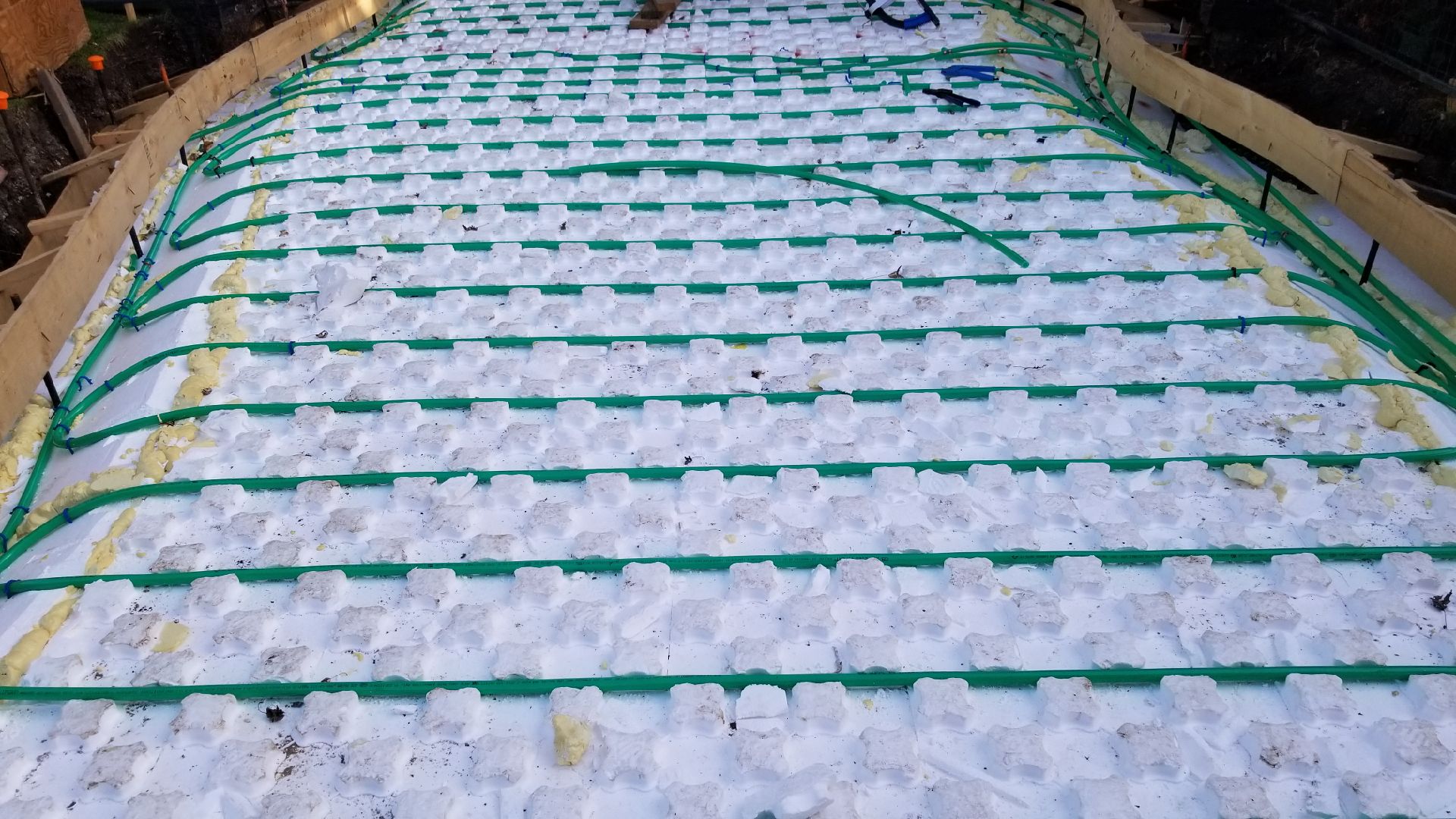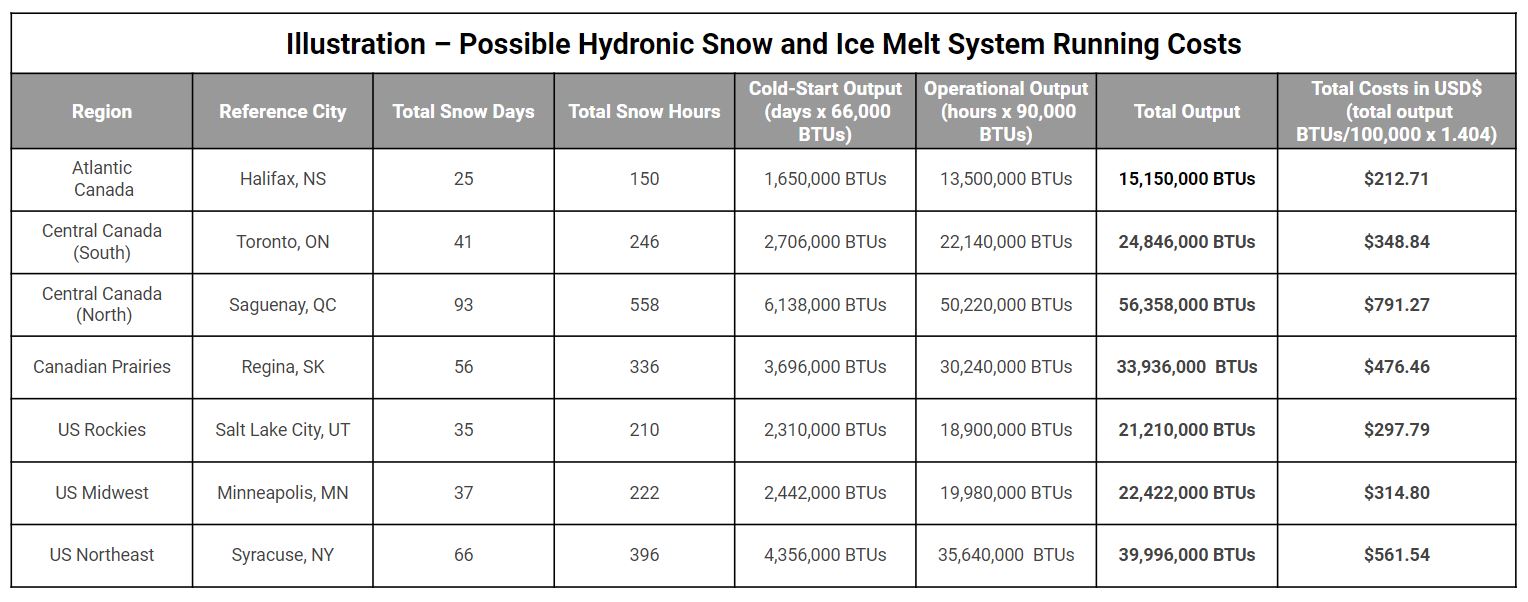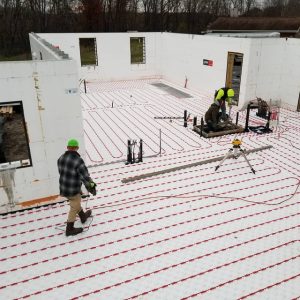Snowmelt systems offer convenience and peace of mind, but is it worth having one under your driveway?
For most people, the answer boils down to operational costs. However, there’s no clear threshold at which running a snowmelt system ceases to make sense — an acceptable expense to one homeowner is a needless luxury to another.
So, in our guide below, we made some simple calculations to show you how much you might expect to pay to keep your driveway clear of snow and ice without using your shover or deicing chemicals.
Remember, the figures below are far from precise; they’re a rough estimate based on average climate data and are for illustrative purposes only.
Read on to find out more!
How Much Might It Cost to Run a Snow and Ice Melt System Annually?
The first thing to note is that the calculations below are very general and leave out several important variables. So the figures you’ll see should be treated as an Order of Magnitude Estimate at best. If you want an accurate cost estimate of what a snowmelt system will cost to run in your locale, please consult with a qualified heating engineer.
Before we jump to the energy consumption and costing data, let’s go over the assumptions we’ve made for the sake of these calculations.

Assumptions
Snow Melt System Size and Performance
For our examples below, we’ll assume a standard-sized, 600ft2 driveway with a residential snowmelt system with a 150 BTU/ft2/hr heat output. This means a total hourly output of 90,000 BTUs.
For our “cold-start” pick-up load — the output required to heat the surface initially when the system fires up — we’ll assume 9.15 BTU/ft2/hr, for each degree we’re raising the surface temperature.
We will also assume a starting driveway surface temperature of 20°F, which should be brought up to 32°F, and a start-up time of 1 hour.
This means that 110 BTUs are needed for each ft2 of driveway surface to get the surface to the temperature at which snow will not accumulate.
With our 600ft2 driveway, this translates to a pickup load of 66,000 BTUs.
These are challenging assumptions to make because the pick-up load varies depending on the slab’s temperature at the start of the snowfall and how quickly you want the system to respond. Still, the chosen value should work for the purposes of an Order of Magnitude Estimate.



Snowfall Durations
To be conservative, we’ll assume 6 hours of snowfall for every snow day. For the locations below, the snowfall averages are derived from weather data collected between 1981 and 2010.
Fuel Costs
Fuel costs fluctuate frequently, so we’ll use the December 2021 average rate of USD $1.404/therm. For your reference, there are 100,000 BTUs in a US therm.

Don't miss a thing!
Subscribe for exclusive content, insider industry news and limited edition webcasts.

Wrapping It Up
As you can see from the table above, the energy consumption and associated costs of a snowmelt system can fluctuate dramatically between regions.
In simple terms, the more snow you get, the more it’ll cost you to run such a system.
Parts of the US Northeast, Central Canada, and the Canadian Prairies see substantial amounts of snow, and consequently, snow melting costs are higher. On the other hand, running a snowmelt system in regions that see fewer snowfall events may see lower operating costs.
Remember, the figures above are far from precise; they’re a rough estimate based on average climate data and are for illustrative purposes only. They don’t account for every variable. Also please remember that for this exercise we’ve assumed that every snowfall is 6 hours long which is somewhat conservative.
To get a more accurate idea of how much it would cost you to run a snowmelt system in your area, consult with a qualified heating engineer.

Pros and Cons of Radiant Floor Heating in a Garage or Workshop
If you’re thinking about heating your garage or workshop, radiant floor heating can be an efficient and practical option. With its ability to provide consistent

Streamlining Radiant Heating Installation with Heat-Sheet Heavy – A Professional’s Guide (Part 2)
In our March post, we explored the initial steps of installing radiant heating with Heat-Sheet Heavy, guided by Kyle Stumpenhorst from RR Buildings. In this

Streamlining Radiant Heating Installation with Heat-Sheet Heavy: A Professional’s Guide
In today’s construction industry, efficiency and reliability are paramount. Through that lens, Heat-Sheet Heavy presents itself as an essential solution for those in the building



